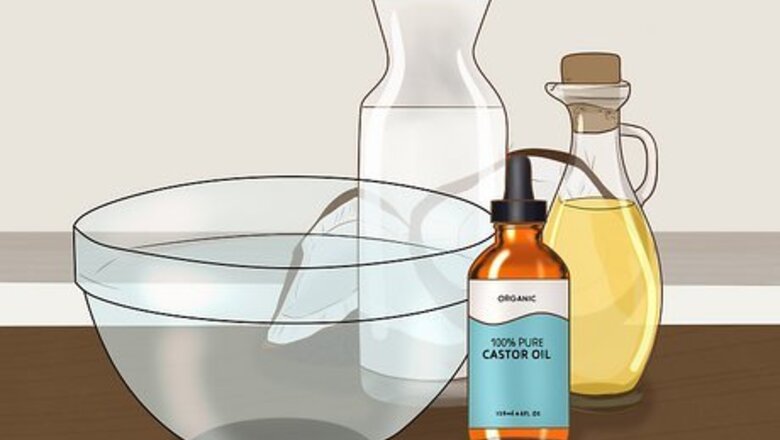
views
X
Research source
We’ll show you how to mix and prepare your castor oil, then massage it into your scalp and hair to give you the mane you deserve!
- Dampen your hair with water, then dip your fingertips into your oil mixture. Massage the oil into your scalp for about 5 minutes.
- Distribute the oil through the rest of your hair with your fingers, then throw on a shower cap and let it sit for 20 minutes. Finally, shampoo it all out.
- Enjoy castor oil's benefits, like less frizziness, fewer tangles, and more shine in your hair!
Mixing the Oil
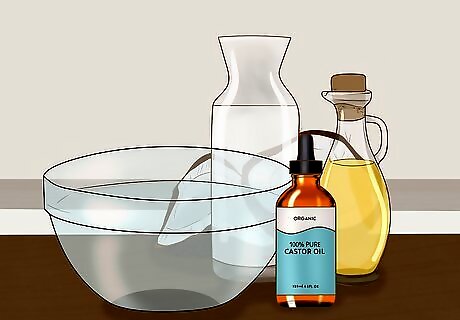
Gather your castor oil, a secondary oil, and your other supplies. Treating your hair with castor oil is simple enough, but there are a few ingredients and tools that make it even more effective and easier to apply, such as a secondary oil to mix with the castor oil for easier application.. Here’s what you’ll need for this method: Castor oil Other hair oil (We recommend argan, avocado, coconut, jojoba, or sweet almond oil.) Hot water Large bowl Jar Shower cap Towel Old shirt (recommended)
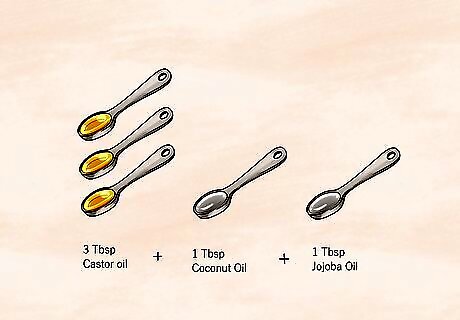
Dilute the castor oil with an equal amount of another hair oil. Castor oil is fairly thick, and mixing it with another oil makes it a little easier to apply. In a jar, combine 1 part castor oil and 1 part of another common hair oil, such as olive oil or coconut oil. You only need about 2–3 US tbsp (30–44 mL) of each, and you can always mix more. Use cold-pressed castor oil if you plan to distribute the oil throughout your hair, and black castor oil if you only want a scalp treatment. It’s thought that cold-pressed oil is gentler on hair. Try the following combination: 3 tablespoons (44 ml) of castor oil, 1 tablespoon (15 ml) of jojoba oil, and 1 tablespoon (15 ml) of coconut oil.
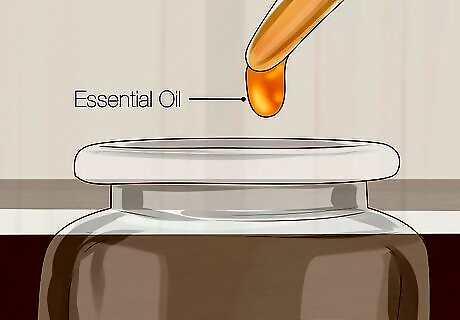
Add a few drops of essential oil to mask the smell. Some people find the scent of castor oil unpleasant. If this bothers you, add in 2 to 3 drops of a fresh-smelling essential oil, such as tea tree oil. Or, mix a few drops of rosemary, peppermint, cedar, and thyme oil to create an essential oil mixture that targets hair growth.
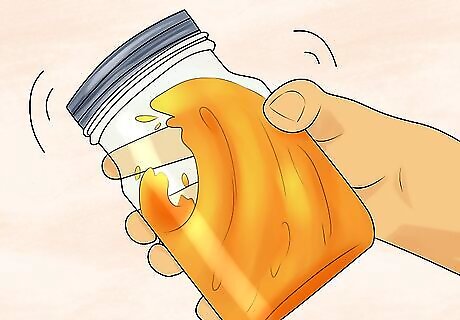
Shake the jar vigorously to mix everything together. Once all your ingredients are inside the jar, close the lid tightly. Then, shake the jar for a few minutes, or until everything is well-incorporated. Ideally, the mixture will be uniform and free of any separation.
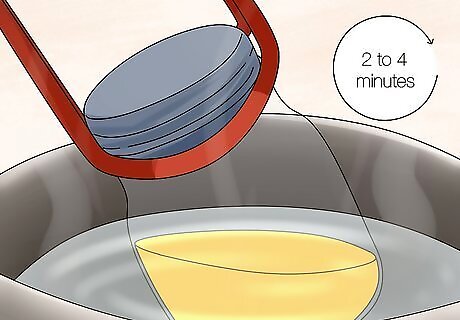
Place the jar in a large bowl of hot water for 2-4 minutes. Heat water on the stove or in a kettle until it just begins to boil. Then, place the jar into a large, heat-resistant bowl, and pour the water into the bowl around the jar, until the lower half of the jar is submerged. Heating the oil this way makes a hot oil treatment. The warm oil more easily saturates your hair and seeps into your scalp. Do not attempt to warm the oil in the microwave, which can overheat the oil and cause injury when you apply it to your scalp.
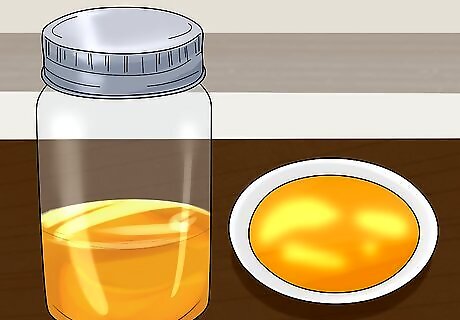
Pour the warmed oil into a small, shallow bowl. This will make it easier for you to dip your fingers into when you go to apply it. Also keep an eyedropper handy, if you have one, which will make for more precise and easy application. If you don’t have an eye dropper, you use a spray bottle.
Using the Castor Oil
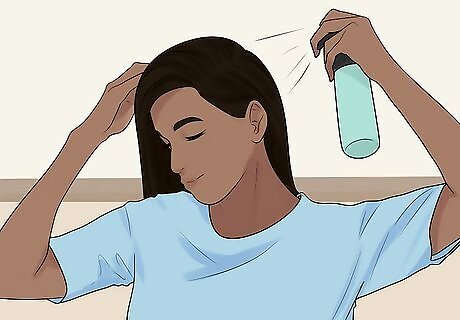
Dampen your hair to help the oil absorb into your scalp. Although castor oil can be applied to dry hair, dampening your hair may help the oil absorb better. Mist your scalp with a spray bottle of water, or wet your hands and run them along the length of your hair, starting at your scalp. Make your hair just a little damp, but not dripping wet.
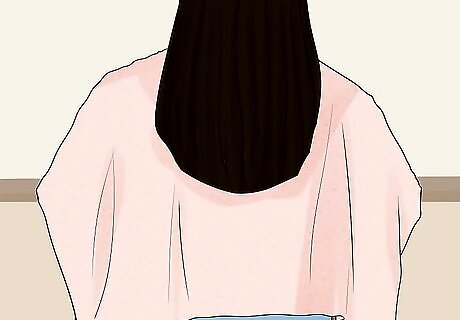
Cover your shoulders with a towel. This will protect your clothes from oil splashes or drips. In addition, wear an old T-shirt to avoid getting oil stains on your good clothes.
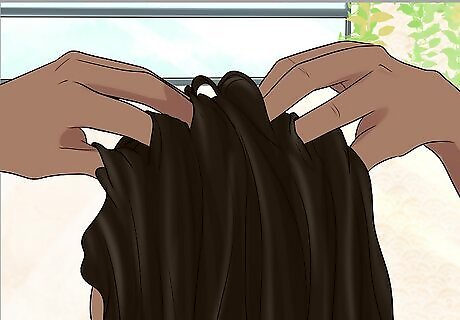
Massage the oil into your scalp for 3 to 5 minutes. Dip your fingers into the oil, then spread it between your roots and across your scalp. Massage your head with your fingertips using small, circular motions. Don’t use too much oil, but just enough to coat your scalp. A little bit goes a long way! Alternatively, use an eye dropper to drip the oil onto various points on your scalp. This may be easier and less messy. Be sure to massage the oil into your scalp for about 5 minutes. Alternatively, dip a cotton ball in the oil and use it to apply the oil to your scalp.
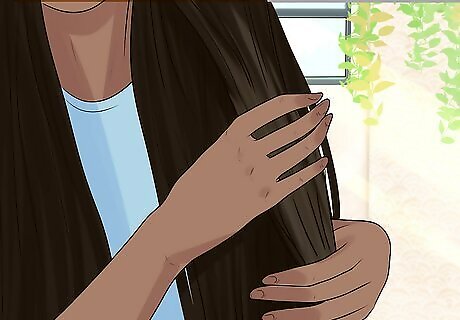
Apply the oil to the rest of your hair. Wet your fingers with a little more oil and rub it between your palms. Then, run your hands across your hair, from the roots to the ends. Use your fingers to comb the oil through your hair; this helps distribute the oil. Again, start with a small amount. You do not need a lot of oil.
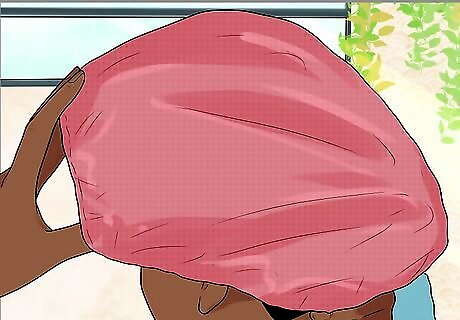
Cover your hair with a shower cap. Loosely pile your hair on top of your head, then put on a shower cap. If you need to, keep it in place with a claw clip. The shower cap will trap the heat inside, and it will keep your hair from drying out.
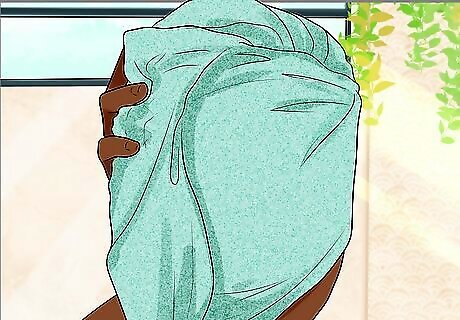
Wrap a hot, damp towel over the shower cap. Warm up a towel by soaking it with hot water under a shower head. Twist the towel to get any excess water out, then wrap it around your head. Tuck the end of the towel in under your "turban," or secure it with a large hair clip. The heat from the towel will make the oil more effective.
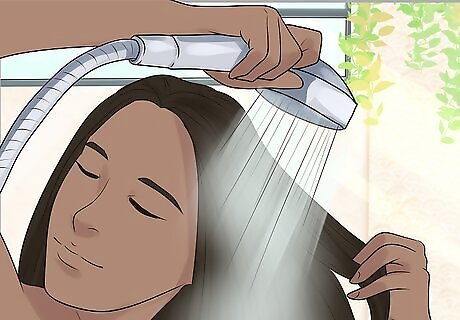
Wash the oil out of your hair after 20-30 minutes. After about 20 minutes, step into the shower and shampoo the castor oil out of your hair. Wash your hair until the oily feeling is completely gone. Some people find that washing with just conditioner—skipping the shampoo—is more effective than using shampoo. If your hair doesn’t feel overly oily or heavy after the treatment, you may choose to leave the oil in instead of washing it out.
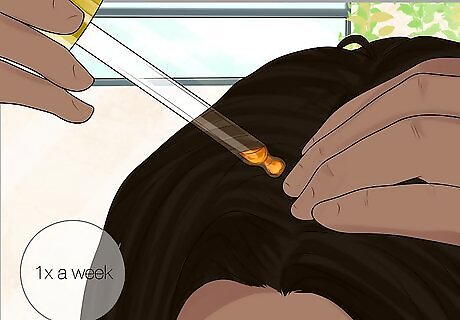
Apply oil to your scalp once a week, or according to your preference. Start by applying the oil once a week, and then shift to more applications if your hair continues to feel dry. Or, use fewer applications if your hair becomes uncomfortably oily. Keep in mind that you may not see results like thicker or stronger hair the next day; use the castor oil treatment for 2-3 months before expecting any dramatic changes. If you begin to notice buildup from the castor oil on your hair and scalp, use a clarifying shampoo. This helps remove any buildup in between castor oil treatments.

















Comments
0 comment